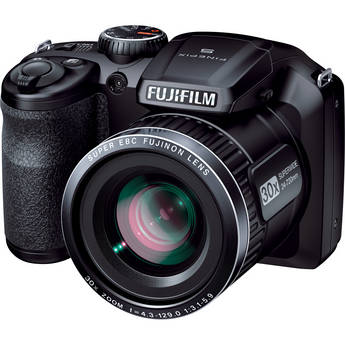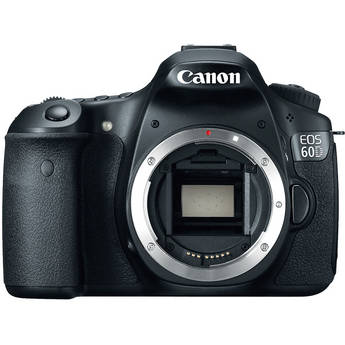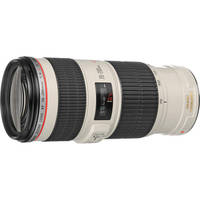Latest Breaking News
In reply to the discussion: Broad Decline in Obesity Rate Seen in Poor Young Children [View all]happyslug
(14,779 posts)Last edited Wed Aug 7, 2013, 02:24 AM - Edit history (1)
And then National Geo uses something like 20-30 of them in the article and that was in the days of FILM. Today, with digital cameras who knows how many photos their take for an article.
As to your question of asking me about taking photos, I have no problem with you asking me but let me go over some comments about taking photos:
Just remember that most photos are bad when taken. This is especially true of "Action" shoots, such as taking photos on animals. Accept that fact and you will enjoy taking photos and will sooner or later find one you took that is great.
Digital Cameras often use Single Lens Reflex (SLR) terminology as "equivalent". Most SLR are and were 35 mm (Through many are now digital) thus it is a good reference point.
Presently I am using a simple digital camera, that are one step below SLR, for I have a habit of breaking them. I dislike the real cheap ones, so I go the step below SLR Cameras. I dislike them for their f-stops are to "high". The lower a lens "F-Stop" the quicker it can operate and take action photos (and night photos). I once owned a SLR with a 50mm 1.7 F stop lens. It worked nice on action shots, animals and at night. I was into photography at that time and thought about replacing it with a 1.4 f-stop 50mm lens, but the price kept me back (the 1.4 f-stop was twice the cost of a f stop 1.7 50mm lens I was using),
When I was using a SLR, my favorite lens was a 70-210 variable lens with a 4.0 f Stop. Could not take good photos with it at night and hard to use in quick action shots, but for most Photos good enough. Larger zooms were just to heavy, smaller zones brought with them the question of "Why" given most of the smaller variable lens, had higher f-stops then a 50mm lens.
At present, I am using a zoom lens with a 2.8 f-stop (2,8 to 4 f-stop, not only the zoom varies so does the f-stop). Please note it is NOT an SLR and does NOT use interchangeable lenses. It is NOT a great lens, but good enough for most photos I want to take, of bike trails, bikes, my dogs and any animals I run across. It cost just under $200 so when I break it (and I will) it will not be like if I broke a $500 SLR with a $1200 zoom lens. You must keep things in prospective. My sister has an SLR that runs $800 and I brought her a 70-200 zoom F4 lens for it for about $1200. It is a Digital Camera and a very good camera. If I wanted a SLR, it is the combination I would get. The Camera is about 10 years old (it uses one of first screens a digital camera had to review your pictures, but the same model today has a much larger screen then she has).
On non-SLR cameras, you have to try to get the lowest F-stop you can. Most bottom at, at about f 2.8. When buying a Zoom, check the lens zooming ability. Now, in recent years I do NOT see Camera bragging about their "Electronic" zooms like they did about 10 years ago. People had caught on that electronic zooms can be done at home on your computer IF THE PHOTO IS SHARP ENOUGH, and to be sharp enough the LENS (Optical) ZOOM has to be the highest possible with the lowest f-stop. i.e. Optical Zoom is more important then electronic zoom.
Here is roughly what I am using today: This is what B&H Photo is selling for $194. The Fuji I am using is about three years old (about time for me to break it) and has only a 18 x zoom, unlike the 40 x this one has.

http://www.bhphotovideo.com/c/product/919913-REG/fujifilm_16301535_finepix_s4800_digital_camera.html
Notice when you read the write up, f stop is f/3.1-5.9 (it is mentioned in the write up BUT not the list of Highlights"![]() . 30x Optical Zoom in Mentioned, "35mm Equivalent Focal Length:24-720mm" is mentioned. given 720 divided by 23 equals 30, the 30 x means 30 times what you would get from a 24mm wide angle lens NOT a 50mm "Normal" lens. Thus its real zoom is 720 divided by 50 or 14X. It is a high end NON-SLR camera. Do NOT compare it with a SLR.
. 30x Optical Zoom in Mentioned, "35mm Equivalent Focal Length:24-720mm" is mentioned. given 720 divided by 23 equals 30, the 30 x means 30 times what you would get from a 24mm wide angle lens NOT a 50mm "Normal" lens. Thus its real zoom is 720 divided by 50 or 14X. It is a high end NON-SLR camera. Do NOT compare it with a SLR.
Please note mega pixels is 16.2 mega pixels. Anything over 10 is considered good. Kodachrome, the premier film is considered to be the equivalent of 20 megapixels. Other Color Films are NOT as high in mega Pixels equivalence, generally around 10 mega pixels, thus 16 is very good.
http://en.wikipedia.org/wiki/Kodachrome
Please Note Kodachrome is no longer in production AND no longer can not be processed. This is the result of low end Digital cameras both breaking the 10 megapixel level AND high end cameras (see Hasselblad below) doing 2-3 times as good as Kodachrome use to do.
SLR 35mm like digital camera are hitting 20 megapixels.
Now my sister has a EOS 50 (no longer made) it was replaced by the EOS 60 (18 megapixels), which is in the process of being replaced by the EOS 70 (20 megapixels), Here is the EOS 60, which sells for $599 with no lens.

http://www.bhphotovideo.com/c/product/732047-REG/Canon_4460B003_EOS_60D_DSLR_Camera.html
About 5-10 years ago I purchased for her a zoom lens, autofocus f-4.0

http://www.bhphotovideo.com/c/product/919915-REG/fujifilm_16303014_finepix_s6800_digital_camera.html
http://www.bhphotovideo.com/c/product/12129-USA/Canon_2526A004_400mm_f_5_6L_USM_Autofocus.html
I suspect the lens will outlast the Camera Body, AND can be used on later Canon Autofocus Cameras.
Notice, the total comes to over $1800 dollars. She gets very good photos, but some of mine are as good.
If you want sticker shock, look at the Hasselblad. Hasselblads digital cameras have 40-60 megapixels capacity but at $16-42,000 dollars, way out of my price range.
I like my sister's camera, but I also like mine. I am more willing to risk breaking mine then she of hers. Technically my camera has more zoom then she does, but given her lens are that much larger then more they take in more light and thus better photos. The issue is one of give and take. In most situation I would opt for the high end NON-SLR camera like I am using. I really do NOT see an real advantages to SLR EXCEPT if you are a professional photography (or want photos like a professional).
The real advantage of a Camera is you USING IT. Expect a lot of bad photos to go with the few great ones (most will be just "good"![]() . Practice helps. i.e. the more photos you take the better photos you will take.
. Practice helps. i.e. the more photos you take the better photos you will take.
One last comment on f-stops Technically a F-stop is the ratio between how LARGE the lens is and its "focal point". The Focal point is the point behind the lens where the image comes into focus (in Camera where the film is, or in digital photography where the image is created). In cheaper lenses, to increase magnification the focal point is pulled rearward (or the lens forward), this has the side affect of increase the focal point length and with it the f-stop of the lens. In better lenses, the focal point remains the same as does the f-stop for the glasses in the lens increase the magnification (Generally by having the distance between the glasses in the lens increase, thus you have many pieces of glass in such lenses, but the distance from the final glass to the focal point remains the same. Not only more pieces of glass are needed, you also need larger pieces of glass in such lenses and why they cost so much).
As to cheaper lenses. Makers of Camera and their lenses often try to LIE about their F-Stops, for example the following:
f/2.9 (W) - 6.5 (T) to f/19
Sounds like it has a F-stop of 2.9, but only it is wide angle mode (in this camera when it is a 24mm). Its "Telephoto" (the (T) in the above specification) F-stop is 6.5 to 19 i.e its f-stop for anything over 50 mm equivalence is 6.5 to 19. Terrible numbers, only usable in bright sun light. i.e. if it is sunny you can use the Zoom, if it is overcast, all you will get is a blur at moderate to high zooms. 16 is considered a cut off on f-stops. Higher F-Stops means Sunlight is NOT bright enough. F8 is considered a good balance in most situations assuming bright sunlight and little action. More action or less sunlight means you need a lower f-stop.
Canon produces a 800 mm telephoto (NOT a Zoom) lens with an F stop of 5.6 for over $12,000. Why? To take long distance photos. a F-stop of 5.6 is about the max you want unless you are taking a photo under "ideal" circumstances, i.e. full sunlight and the subject is standing still.
More on F-stops:
https://en.wikipedia.org/wiki/F-number
Please note, high f-stops do have good points. For example if you have some question as to the distance, a high f-stop minimize any chance of blurring by having the increase depth of field obtained with higher f-stops. A lot of photos of mountains, lakes etc are done with high f-Stops to get the whole mountain or lake in the photo.